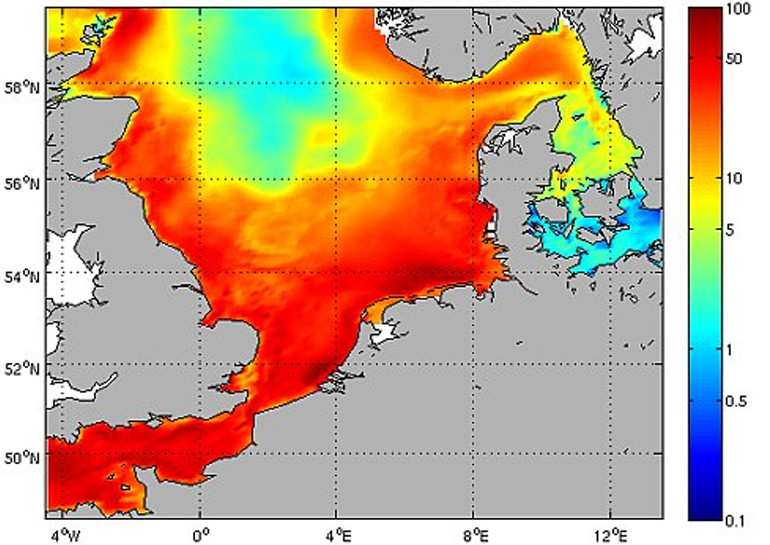Higher trophic levels

Potential food availability for Pelagic Fish (mgC/m2/d)
Period: 03-Jan-1989-31-Dec-1989 Ave/Gridpoint=20.4755
Food availability
The model does not explicitly simulate pelagic or benthic fish. However it is possible to estimate how much food is available for the higher trophic levels. This is done by making use of the “predation closure” in the model. In our model carnivorous zooplankton represents the highest trophic level in the water column and infaunal predators in the sediment. In order to constrain these predators to a realistic range of observations, we have defined density-dependent loss processes which regulate their abundance. These processes form the closure of the model and are self-regulating: density-dependent mortality and grazing by the top-predators on themselves. We then calculate the total loss of these processes in the pelagic as well as in the benthic, and assume that these losses are a measure for the food available to the higher trophic levels.
The results show that much more food is available for pelagic fish than for benthic fish. This is logical because in the sediment there is (almost) no primary production, as there is a permanent absence of sunlight. As a consequence the benthic system is completely dependent on the pelagic system and moreover in this model the number of intervening trophic levels between the primary producers and benthic fish is one or two more than between primary producers pelagic and fish.